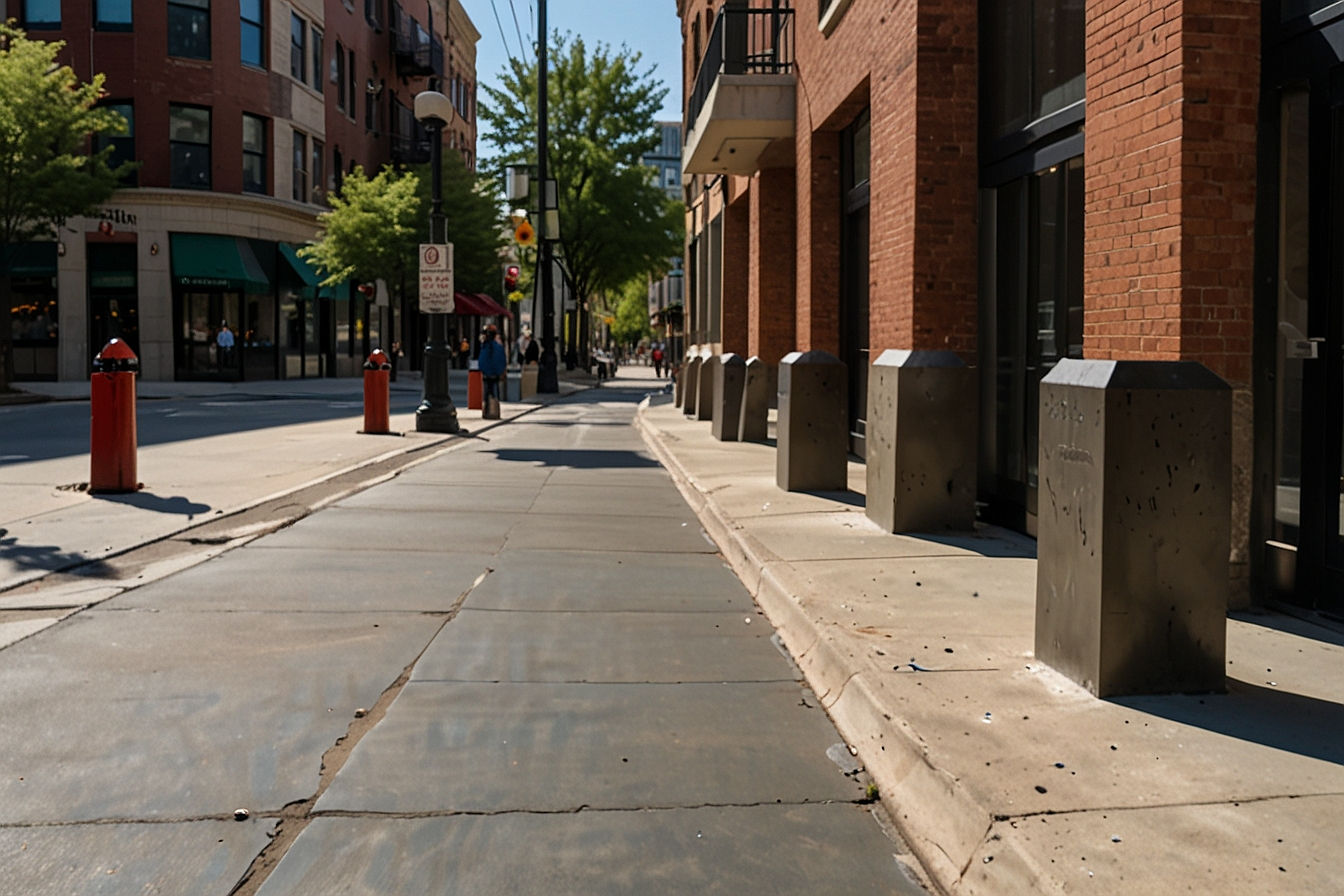Introduction
This paper focuses on using self-automobiles like Personal Light Electric Vehicles (PLEVs), which include e-scooters, hoverboards, electric skateboards, and others in urban society. These two-wheeled vehicles are gaining popularity in urban areas as people opt for green modes of transport and limited use that they can perform. Nonetheless, their uptake has prompted a flurry of legal issues, especially in areas that are legally permissible to operate them. An often posed question is, “Are PLEVs Allowed on the Sidewalk?” A number of variables, including the nation’s laws, the risks, and the type of PLEV being used, affect the answer.. This paper discusses this question in detail to give a logical understanding of what PLEVs are allowed on the Sidewalk.
What Are PLEVs?
PLEVs refer to Personal Light Electric Vehicles (PLEVs), low-energy battery-operated vehicles for personal use only. Such cars include electric scooters, one-wheelers, Segways, and hoverboards. These devices are frequently promoted as a rather satisfactory and effective means of freshening up for a small journey instead of using cars. These PLEVs travel at 10-25mph speeds, proving useful in urban areas where conventional vehicles will experience traffic jam challenges.
Federal Guidelines for PLEVs
The federal government imposes limited regulations on PLEVs in the United States, and most regulations are for preserving the states or municipalities. Still, there are federal guidelines in this respect that can guarantee safety and standardized performances. The Consumer Product Safety Commission regulates the safety of PLEVs, but it does not restrict their usage areas. With no law explicitly banning or allowing PLEVs on the sidewalks, it becomes up to local governments to decide.
State Laws and Regulations
There is a significant variation in the state laws that prescribe PLEVs. Depending on the state, PLEVs are recognized as being bikes, which means they can be used on bike lanes, roads, and, at times, Sidewalksidewalks. In others, they are classified as powered bikes, and operating them is only allowed on the streets. For instance, while provision regarding the usage of electric scooters on sidewalks is less restrictive in California, it will enable these vehicles on sidewalks only if they cannot find any other way to get to an appropriate parking or charging spot, and New York City prohibits most varieties of PLEV on sidewalks.
If you’re also wondering, “Are PLEVs Allowed on the Sidewalk in my state?” The majority of local ordinances will have the solution to the aforementioned query. You should consult your local city or state’s Department of Transportation (DOT) for the most up-to-date information.
Municipal Ordinances: A Local Perspective
Some regulations may spell out detailed conditions for using PLEVs at the city level. The probability and frequency of interference between pedestrians and PLEV users reduces urban centers that experience high pedestrian traffic, like San Francisco and Chicago, try as much to limit the use of sidewalks as much as possible. In contrast, localities in neighborhoods or less populated areas hold permission to commence. Are PLEVs Allowed on the Sidewalk as long as operators practice short operations and obligatory speeds and give way for pedestrians?
For instance, in Austin, Texas, people who ride PLEVs can walk on sidewalks, though they must dismount the PLEV in areas densely packed with pedestrians. In Miami, Florida, the general rules of sidewalk usage require that the pathway be marked officially as a shared walking and biking space. Therefore, deciding whether PLEVs are permitted on the Sidewalk in your area is essential.
Safety Concerns
Safety is one of the bar-tolerant values for using PLEVs Allowed on the Sidewalk. Sidewalks are meant chiefly for walking people. Since people walk at a pace of 3 to 4 miles per hour, these are sidewalks intended for pedestrian use. Allowing PLEVs capable of going at much higher speeds causes hazards, and accident rates are likely to rise. “Are PLEVs allowed on the sidewalk?” is the query. How these areas affect pedestrian safety will determine a lot.
In this regard, some jurisdictions have implemented regulatory measures allowing PLEVs to travel at slow speeds on sidewalks. For instance, Seattle, Washington, has okayed using e-scooters on sidewalks, but their maximum speed is restricted to 5mph. Turn signals must be given, and the operator must give way to pedestrians and sound a warning whenever it is behind them.
Perks that come with permitting PLEVs on Sidewalks
Many advocate for the policy that permits PLEVs to drive on sidewalks under certain circumstances, including the following. You find that sidewalk usage can be safer than road use, especially for the new riders in the compound. It can also decrease traffic jams and increase the use of responsible means of transport. It may be dangerous, but it permits limited use of PLEVs on sidewalks and increases mobility in urban areas without necessarily increasing the rate of accidents.
Challenges of Enforcement
However, effective law enforcement is difficult even if the sidewalks are legal for PLEVs. There is little that the police or other authorities can do to enforce the law regulating the use of sidewalks due to the lack of capacity to enforce the law. Also, different rules cause conflict and uncertainty on behalf of riders and pedestrians as well. These problems can only be solved by raising public awareness, using visible, clear, and approachable signs, and cooperation between local governments and PLEV manufacturers.
Dos and Don’ts when Deploying PLEVs on Sidewalks
As you know, PLEVs are permitted in some locations on the Sidewalk. Thus, it is crucial to apply the guidelines to ensure all customers’ comfortable use of the sidewalks. Here are some general tips:
Yield to Pedestrians: Pedestrians must always be given way.
Maintain a Safe Speed: Maintain a low pace to reduce the chances of accidents.
Use Audible Signals: Warning road users, especially pedestrians, when overtaking them.
Be Mindful of Surroundings: Pay particular attention to barriers, routing paths, turnings, and junctions.
Although horns are used as alarms in different car models, PLEV users can follow these heedful procedures to eventually ensure a symbiosis with other sidewalk users.
Technologic Advancements For Enhancing Safety
In addition, the increase in the production of PLEVs has led to integrating sophisticated features to increase safety and adapt to state laws. It is possible through the implementation of geofencing technology that the speed can be lowered or even cause the PLEV to stop operating in places where the sidewalks are used inadmissibly. These innovations could make it easier to answer the question: Are PLEVs Allowed on the Sidewalk? By ensuring that they make some riders obey the regulations, it has the potential to.
Public Opinion and Advocacy
Much controversy has always been about whether PLEVs are permitted on the Sidewalk. People on foot, on bikes, and in cars have divergent perceptions of how PLEVs should be deployed in the city. Most organizations that fight for change or against change are all policy-making stakeholders. Knowledge of these perceptions can go a long way in marketing balanced laws and regulations that suit everyone.
This argument discusses the possible trends in the future changes of the PLEV regulation.
Since PLEVs are becoming increasingly widely used, it could be expected that their regulation will change in the future. Newer trends include PLEV-only lanes, as there are bike lanes now, and smart infrastructure that can learn traffic behavior changes. These innovations could give a much more precise response to whether PLEVs are allowed on the Sidewalk and provide options to meet safer and more convenient alternatives.
Conclusion
The question, such as Are PLEVs Allowed on the Sidewalk? A universal solution for this issue is not available. Policies are implemented according to the current legislation, safety standards, and citizens’ attitudes toward such practices. Whereas some places allow the pavement to be used with restrictions, other places put in place a total no usage of the pavement to prevent risks from being faced by pedestrians. PELV is safe, but it is recommended that a PLEV user familiarize himself with the rules in their locality and always exercise caution. That way, you can obtain the advantages of this splendid traffic mode without disturbing other pedestrians aggressively invading their natural territory – the sidewalks.






